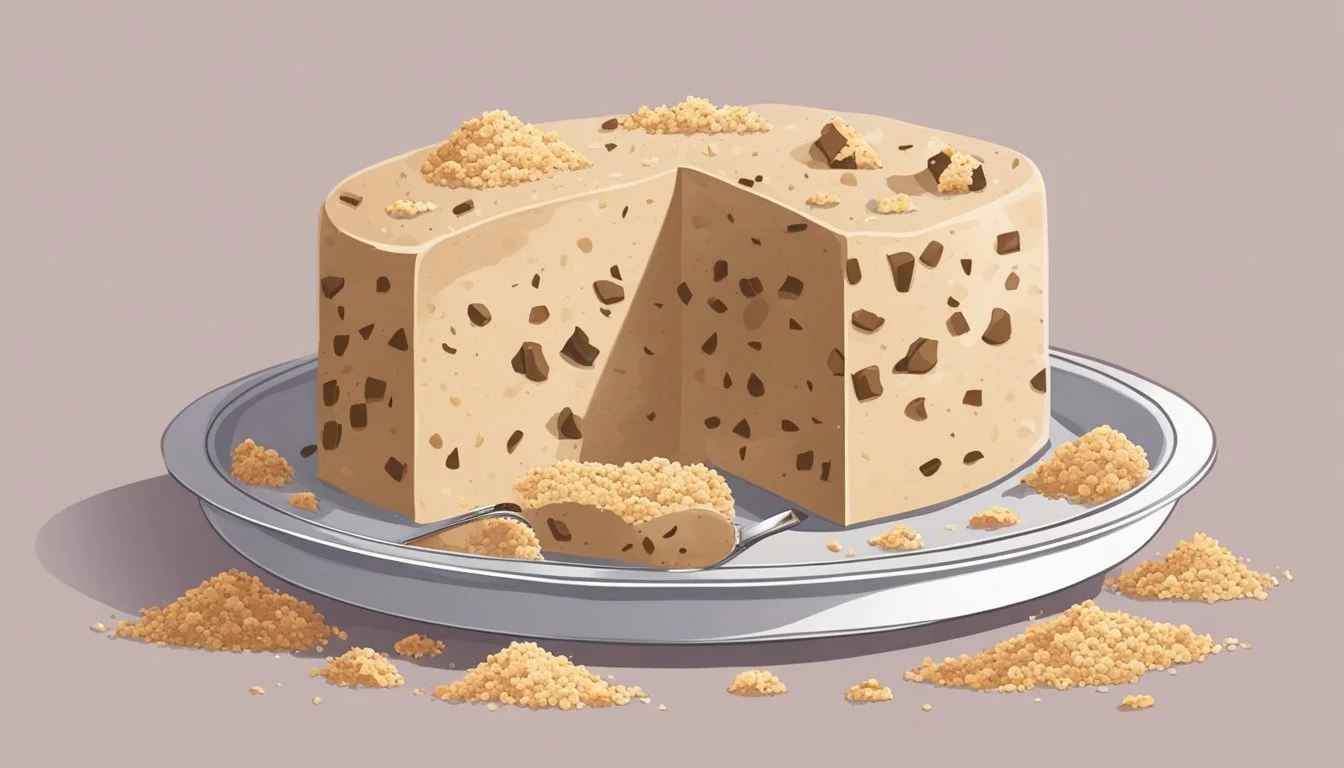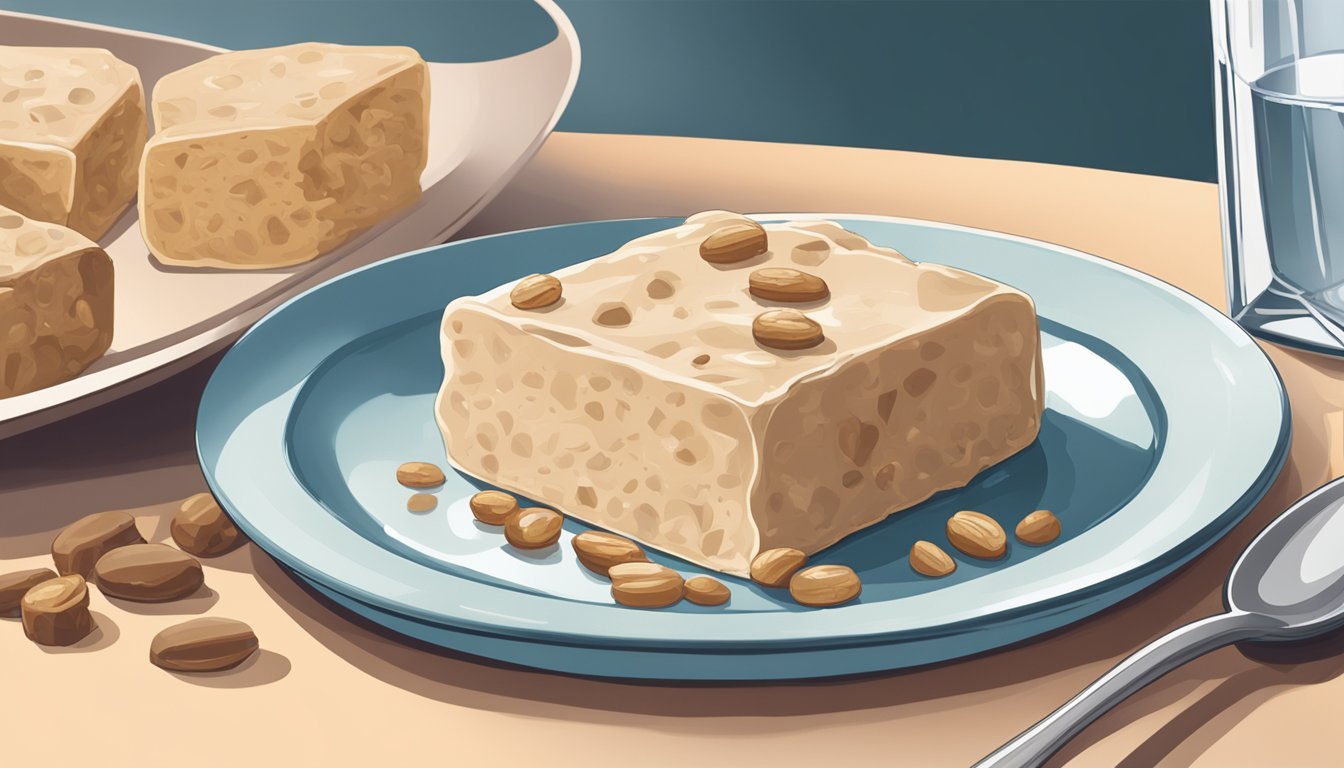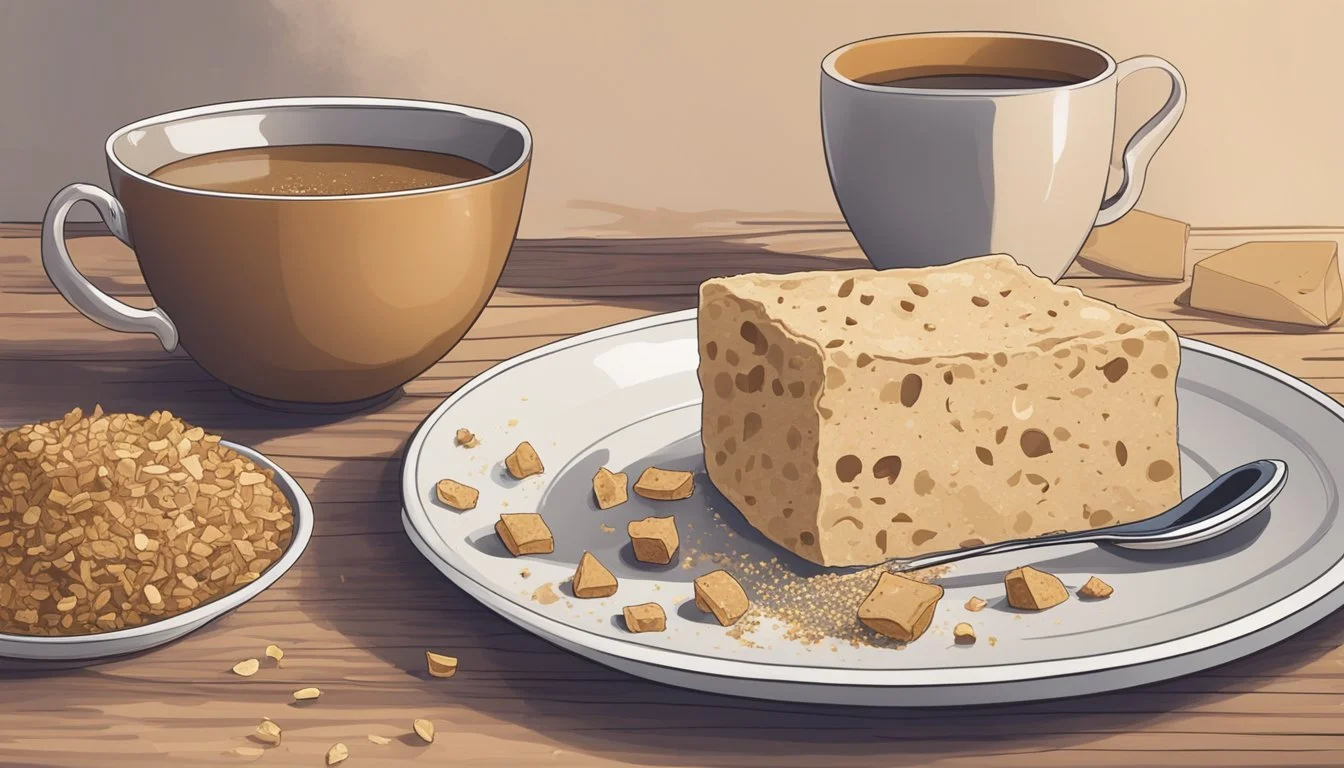How do you eat halva?
Simple Ways to Enjoy this Sweet Treat
Halva is a dense, sweet confection with origins that trace back to the Middle East. This versatile dessert has been enjoyed for centuries, with variations found across different cultures. It commonly incorporates sesame paste, known as tahini, and sugar or honey as its base ingredients, offering a unique texture that is both crumbly and slightly chewy. The name halva itself comes from the Arabic word for sweet, and it aptly reflects the dessert's sugary taste and widespread popularity as a treat.
Eating halva can be a simple and delightful experience. It is often consumed on its own, cut into slabs or cubes, allowing connoisseurs to savor its rich, nutty flavor. The confection's dense nature also makes it a formidable pairing with various accompaniments. For instance, it can be crumbled over ice cream, mixed into yogurt, or spread on toast, making it a versatile addition to many desserts (What wine goes well with desserts?) and snacks. As the sweet has expanded globally, some have even incorporated it into baking recipes, enhancing pastries and other baked goods with its distinct flavor profile.
The way one chooses to eat halva can greatly accentuate its taste and texture. Whether it's enjoyed as a standalone snack, used as a topping, or integrated into recipes, halva offers a glimpse into a traditional dessert that has stood the test of time. Its adaptability in modern cuisine continues to endear it to new generations, ensuring that this ancient treat remains a beloved indulgence around the world.
What Is Halva?
Halva is a dense, sweet confection popular throughout the Middle East and surrounding regions. It is recognized for its fudgy texture and variety of flavors.
Origins and Cultural Significance
Halva (also spelled halvah, halawa, and other variants) has a storied past that reaches deep into the Middle East with links to Mediterranean, Eastern European, South Asian, and Middle Eastern cuisine. Its name is derived from the Arabic word halwa, meaning sweet. It holds cultural significance in various ceremonies and traditions, and is often seen in religious festivities, celebrations, and as a daily treat.
Main Ingredients
Sesame seeds, ground into tahini, form the basis of most traditional halva. This primary ingredient is combined with sugar to create its characteristic sweetness. While sesame-based halva is prevalent, some variations use flour or other grains for texture and taste variations. The simplicity of its main components -- seeds and sweeteners -- allows for an array of flavors, textures, and preparations, reflecting the diverse culinary landscapes of its regions of origin.
Types of Halva
Halva comes in various textures and flavors, often characterized by its main ingredient which influences its texture, be it crumbly or smooth, and its sweetness level.
Sesame-Based Halva
Sesame-based halva, often referred to as tahini halva, is made from sesame paste (tahini) and sugar or honey, resulting in a dense, crumbly texture. It frequently includes additional flavors such as vanilla or chocolate, and can be studded with nuts like pistachios or sunflower seeds for added crunch.
Flour-Based Halva
This type of halva is made by roasting flour, typically semolina or wheat, in oil, and then mixing it with hot sugar syrup. It is commonly found in Middle Eastern and Indian cuisine. The texture can vary from tender to crumbly and it's often flavored with rosewater, cardamom, or saffron. Nuts like almonds or pistachios may be incorporated to enhance its flavor and texture.
Nut-Butter-Based Halva
Nut-butter-based halva is a less common variety made from nut butters, such as sunflower seed butter or other nut-based substances, combined with sugar to achieve a sweet taste and a distinctive, often creamy texture. This type may also include whole nuts or seeds, which introduce a crunchy contrast to the smoothness of the halva.
Preparing Halva
Preparing halva involves a series of steps to create its distinctively sweet and fudgy texture. It is a versatile treat that can incorporate a variety of flavors and additions, ensuring a wide appeal.
Basic Recipe Steps
The process of making halva often begins with creating a sugar syrup that acts as the sweet base. This syrup is typically made by dissolving sugar and water with added flavorings such as rosewater, cardamom, or cinnamon. In some recipes, honey is substituted for sugar to add a rich, earthy sweetness.
Combine sugar (or honey) and water in a saucepan, heating until the sugar dissolves.
Add chosen flavorings such as cardamom or rosewater.
In a separate bowl, mix the primary ingredient such as tahini or semolina with a form of fat like butter or oil. This mixture forms the base of the halva.
Cook the base mixture while stirring continuously to prevent sticking. For semolina-based halva, cook until the semolina is golden brown.
Gradually incorporate the hot sugar syrup into the base mixture, stirring vigorously to ensure a smooth consistency.
Pour the halva mixture into a lined baking pan and let it set, usually at room temperature, until it's firm to the touch.
Common Flavors and Additions
Halva is revered for its adaptability, with several common flavors and additions that can be integrated into the base recipe:
Sesame: A classic flavor for halva, using tahini (sesame paste) as the base, which imparts a nutty taste.
Nuts: Pistachios, almonds, and other finely chopped nuts are often added for a crunchy texture and rich flavor.
Dried fruit: Sultanas, dates, or other dried fruits may be mixed in for natural sweetness and a chewy contrast.
Spices: Common spices include cinnamon or cardamom, either incorporated into the mixture or sprinkled on top for aroma and flavor.
Chocolate: Some recipes introduce chocolate, either mixed into the halva or as a topping, for a decadent twist.
By following these steps and choosing from a wide range of additions, one can prepare halva that suits individual taste preferences while still honoring the traditional aspects of this delightful confection.
Serving Suggestions
Halva, a versatile confectionery, can be enjoyed in multiple ways. It seamlessly complements an array of accompaniments and can be presented in unique styles that enhance its sweet flavor profile.
Accompaniments
With Beverages: Halva pairs excellently with strong coffee or tea, complementing the beverage's bitterness with its sweet notes.
As a Spread: It can be spread on toast, providing a sweet start to the breakfast table.
With Other Sweets: Incorporating bits of halva into cookies or drizzling it over desserts can add a unique sweetness and texture.
Complementing Flavors: The sweetness of halva is balanced well by pairing it with dark chocolate or fresh fruits.
Presentation Styles
Dessert Topping: Crumbled as a topping, halva adds a sweet twist to ice cream, yogurt, or oatmeal.
Integral Ingredient: Mixed into batters, halva can transform simple sweet treats like cakes or brownies.
Solo Sweetness: Served alone, it can stand as its own delectable dessert, especially when accentuated with a sprinkle of cinnamon or drizzle of honey.
Creative Uses in Cooking
Halva's adaptability shines in the kitchen, where it can elevate various dishes with its sweet and nutty flavor profile. From baked goods to breakfast options, halva infuses a unique taste and texture.
Halva in Baking
Halva can transform ordinary baking recipes into exotic creations. When mixed into cookie dough or brownie batter, it adds a sweet sesame twist. Muffins benefit from crumbled halva mixed into the batter, giving them a moist texture and a richer flavor. For a decadent treat, one might swirl halva with banana puree or chocolate to make flavorful banana bread or marble cakes. Bakers commonly use parchment paper to line tins when baking with halva to prevent sticking.
Pastries: Fold small pieces of halva into pastries before baking for a sweet surprise.
Brownies: Enhance brownies by adding chunks of halva into the mix; sprinkle with cocoa powder for an extra chocolatey touch.
Crusts: Crush halva into breadcrumbs to create a distinctive crust for cheesecakes or pies.
Halva as a Condiment
Considered a versatile condiment, halva can be whisked into nut butters or softened with milk to create a spreadable paste for toast. One can even melt it down and drizzle it over ice cream or pancakes. For a savory twist, blend halva with lemon zest and a dash of salt to top a cheese platter.
Nut Butter Blend: Combine ground halva with your favorite nut butter for a rich spread.
Sauce: Melt halva with a little milk to drizzle over desserts as a sweet sauce.
Incorporating Halva in Breakfasts
Breakfasts are transformed by incorporating halva. Mix it into oatmeal or yogurt with dried fruits and chopped nuts for added texture and sweetness. It also makes a great topping for waffles or pancakes, providing a satisfying start to the day.
Oatmeal Toppings: Stir chunks of halva into hot oatmeal, and finish with a sprinkle of dried fruits.
Pancake and Waffle Garnish: Crumble halva atop fresh pancakes or waffles for a twist on the morning routine.
Storing Halva
When preserving the quality and extending the shelf life of halva, proper storage is crucial. Ideally, halva should be kept in an airtight container to prevent it from drying out or absorbing odors. For short-term storage, placing halva at room temperature in a dry and cool environment, such as a pantry, minimizes exposure to heat and light. This helps maintain its flavor and texture.
For refrigerated storage, halva may be placed in the refrigerator, where it can last for 4 to 6 months. It should be well-sealed to prevent the absorption of other food odors. If one plans to store halva beyond six months, freezing is a viable option. Slices can be wrapped and placed in an airtight container before storing at -18°C (0°F), ensuring protection from freezer burn.
Regular monitoring of halva for any signs of spoilage, which can include mold, an unpleasant smell, or a change in texture, will help to ensure it remains enjoyable to eat. By following these storage guidelines, the delicate flavor and consistency of halva can be preserved, extending its enjoyment well beyond its initial serving.
Health Considerations
When considering halva as a part of one's diet, it's crucial to be aware of its nutritional content and how it fits into various dietary adaptations. While halva can be a delicious treat, one should approach its consumption with an understanding of its ingredients and their implications for health.
Nutritional Content
Halva typically contains protein, which is derived from its primary ingredients such as sesame seeds or sunflower seeds. However, the sugar content can be significant, as halva is often sweetened with sugar or honey, contributing to its overall caloric intake. Depending on the ingredients used, certain varieties of halva may offer a gluten-free dessert option for people with gluten sensitivities or celiac disease.
Nutrient Approximate Content per 1-ounce serving Calories 131 Protein 3.5g Carbohydrates 17g Fat 6g Saturated Fat 1.2g
It is also rich in unsaturated fats, which are considered healthier compared to saturated fats.
Dietary Adaptations
Individuals adhering to specific dietary regimens should consider how halva might fit into their diet. Those on a low-sugar or lower-calorie diet might need to consume halva in moderation due to its sugar and calorie content. For gluten-free diets, one should ensure that the halva variant does not contain any grain-based ingredients that are sources of gluten.
For people incorporating more plant-based proteins, halva made from nut butters can be a good alternative to animal proteins. As with any dietary choice, it's important for individuals to balance enjoyment of foods like halva with their dietary needs and goals, keeping mindful of portion sizes and the potential need to adjust other parts of their meal plan accordingly.
Finding and Buying Halva
Purchasing halva is a delightful journey into the world of sweet, dense confections enjoyed in various regions. Discerning consumers can find high-quality halva online, assess its quality through certain indicators, and explore the confection's regional varieties to savor different cultural interpretations.
Purchasing Online
When seeking to purchase halva online, consumers will find a plethora of options available through specialty food retailers and global marketplaces.
Retail Websites: Many Middle Eastern and Mediterranean delis offer their products online.
Global Marketplaces: Sites like Amazon and eBay also provide a range of halva selections from different sellers.
One must take shipping considerations into account, such as ensuring the halva is packaged securely to prevent damage and maintain freshness during transit.
Identifying Quality Halva
Quality halva should have a firm texture and should not be overly crumbly or sticky. Key indicators include:
Texture: It should be slightly fudgy but firm.
Aroma: A good halva exudes a pleasant nutty smell due to its sesame or tahini content.
Ingredients: The ingredients list should be short, often featuring tahini (sesame paste) and sugar as the main components.
Observing these indicators can help ensure consumers select a high-quality product, whether from online sources or local markets.
Exploring Regional Varieties
Regional varieties of halva reflect the cultural and culinary practices of the places they originate from.
Middle Eastern Variations: This often includes tahini-based halva laced with pistachios, almonds, or flavored with rose water.
Mediterranean and Eastern European Varieties: Here, one might find halva made with sunflower seeds or flavored with cocoa.
South Asian Halva: This version may include a variety of ingredients such as semolina, grains, ghee, and nuts.
Understanding the regional variations is crucial for consumers who wish to experience the distinct flavors and textures that various types of halva offer. Exploring local markets and ethnic stores can also provide a more immersive experience in these regional delicacies.
Cultural and Social Aspects
The cultural and social interactions with halva vary by region, reflecting its significance in various traditions and the way it is popularized in the digital age through social platforms like Facebook and Instagram.
Halva in Celebrations
In many Middle Eastern and South Asian cultures, halva holds a special place during celebrations and is often tied to specific rituals. For instance, in Jewish tradition, halva is served during festivities such as weddings and bar mitzvahs as a symbol of sweetness and joy. The Arabic world considers halva not just a sweet treat but a part of hospitality, often serving it to guests as a gesture of welcome. During religious occasions, such as Ramadan, halva might be consumed to break the fast. The significance of halva in these cultures is deeply rooted, with each community embedding it with its own set of meanings and customs.
Social Media Influence
On social media platforms, like Facebook and Instagram, halva has found a new avenue for appreciation. Food bloggers and influencers often post images of creatively presented halva dishes, influencing its use in modern culinary traditions. These posts not only show the versatility of halva but also introduce it to a wider, global audience. Platforms like Instagram, in particular, play a role in the resurgence of interest in traditional foods, as users seek out authentic and unique dining experiences. They contribute to the cross-cultural exchange, with people sharing their own ways of enjoying halva, whether in traditional recipes or as innovative dessert fusion. Social media thus serves to both preserve and evolve the culinary and social relevance of halva.
Conclusion
In summary, halva is versatile enough to be incorporated into various dishes or enjoyed on its own. One can savor halva by:
Pairing with fruits: A combination of fresh fruits complements the sweetness of halva.
Adding it to desserts: Incorporating halva into baked goods, such as brownies, introduces a unique texture and taste.
As a breakfast spread: Halva can be spread on toast, offering a sweet start to the day.
Mixing with dairy: Stirring pieces into yogurt or ice cream can enhance these simple snacks.
It's important to note that the method of consumption may vary according to personal preference and the type of halva. Sesame-based halva, for instance, could be a topping for pastries, while nut or flour-based variants might be best enjoyed in smaller quantities due to their richer flavor profiles.
Ultimately, whether one opts for a traditional approach or ventures into modern pairings, halva remains a treasured confectionery with a rich cultural heritage. The sweet treat invites culinary exploration and can easily adapt to different palates and preferences.








